Audemars Piguet Universelle: the holy grail of watchmaking
“Creating the ultimate ultra-complication watch of the 21st century”: here is the original brief for the Audemars Piguet engineers and watchmakers. After seven years of development, the brand-new Code 11.59 by Audemars Piguet Ultra-Complication Universelle RD#4 concentrates all the technologies developed by the manufactures. There are in total, 40 functions including 23 complications and 17 technical devices for a “paranormal” timepiece. Welcome aboard for a trip to fine watchmaking.
A tribute to the pocket watch: the 1899 Universelle
Marie-Antoinette by Breguet (1802), La Merveilleuse by Ami Lecoultre (1878), Leroy 01 by Louis Leroy (1900), Henry Graves Supercomplication by Patek Philippe (1933) or Le Cabinotier by Vacheron Constantin (2019), these extraordinary timepieces are an integral part of the very private and privileged sphere of famously complicated watches.
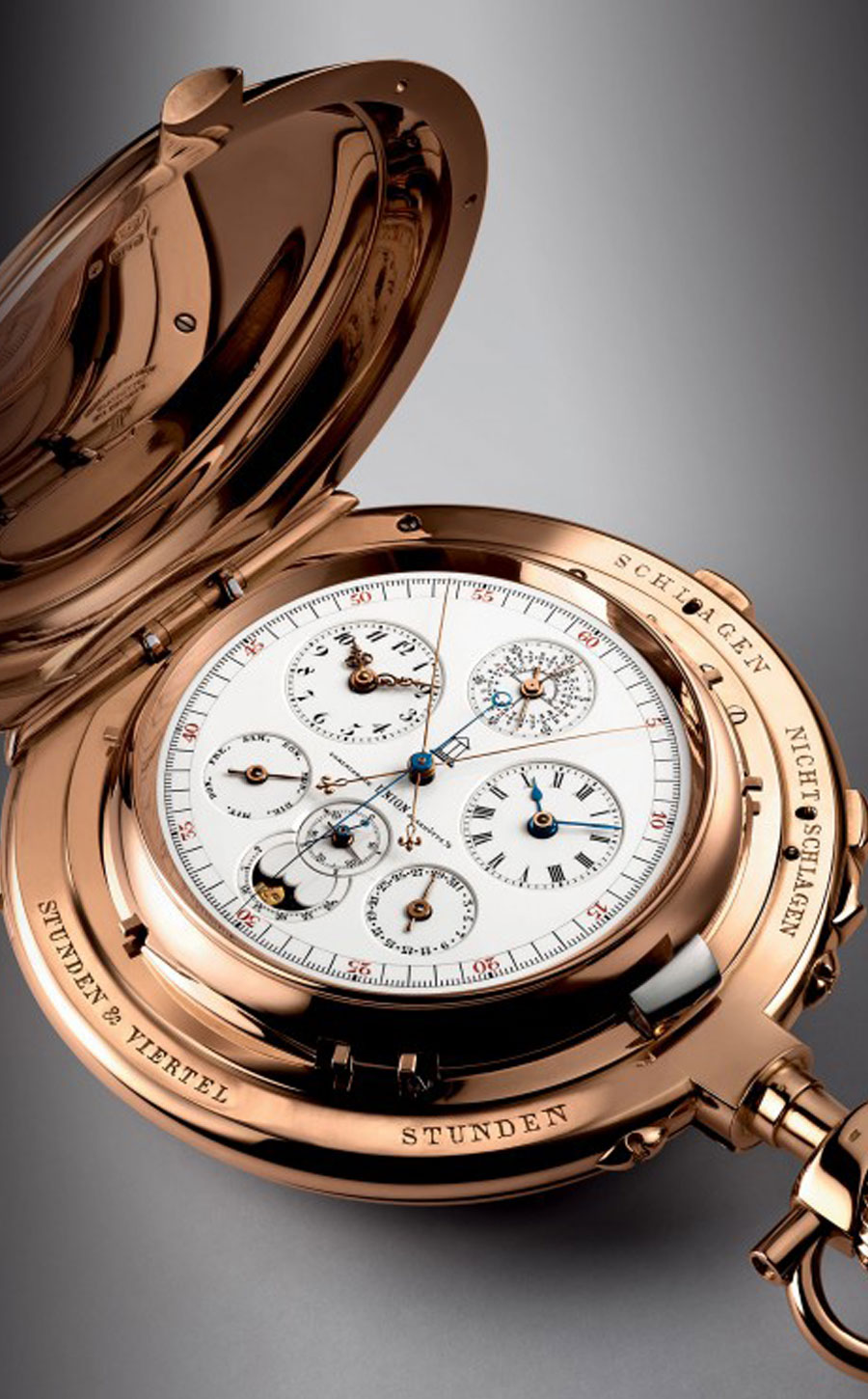
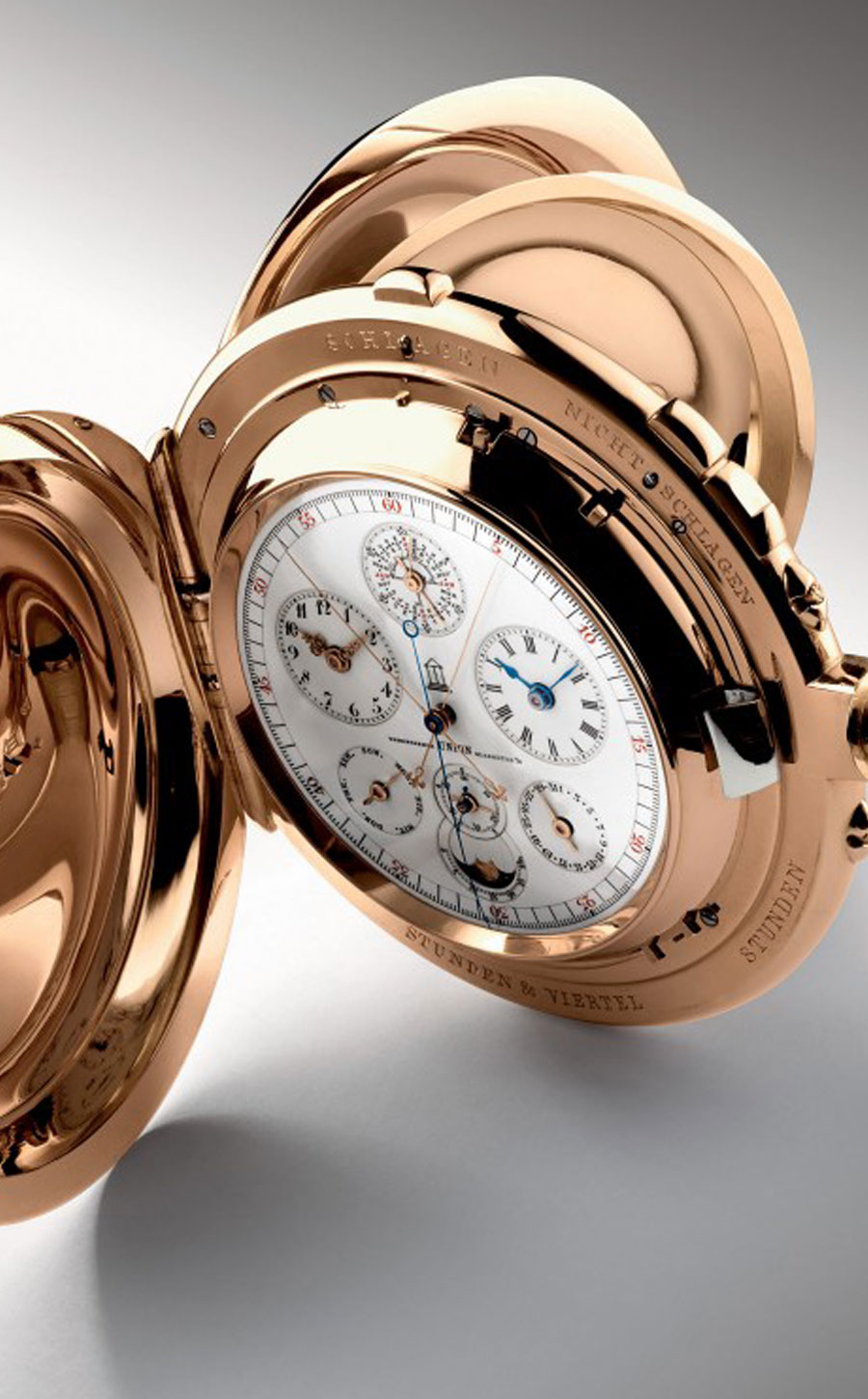
Just like the Universelle by Audemars Piguet, an 1899 pocket watch celebrated by the Code 11.59 by Audemars Piguet Ultra-Complication Universelle RD#4 as a historical tribute.
A superlative watch
This is the very first ultra-complicated wristwatch created by the manufacture with a very simple and precise goal: creating a watch that is ultra-complicated, sturdy, user-friendly and that you can wear daily.
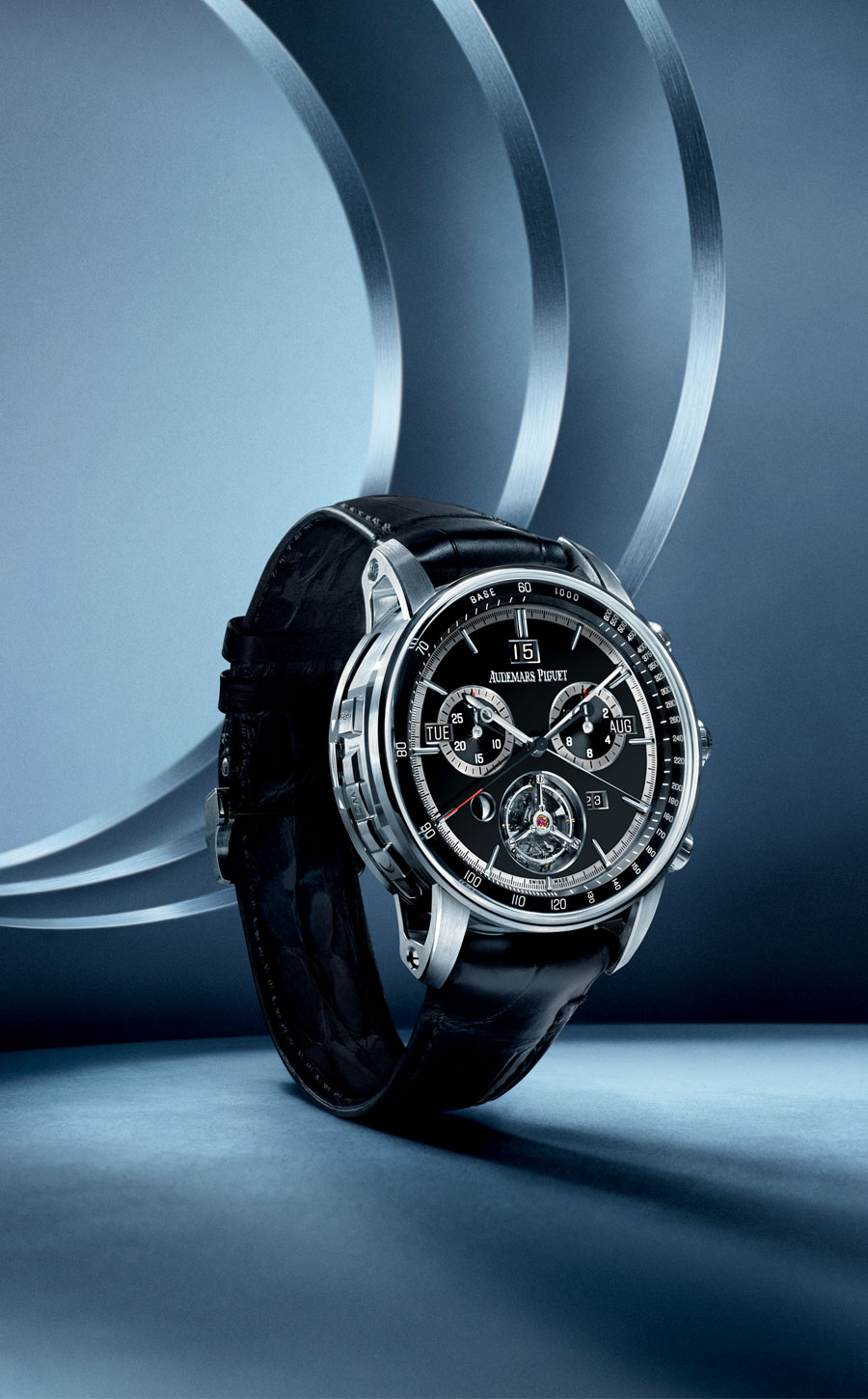
40 functions in total, 23 complications and 17 technical devices are concentrated in the 42 mm case – opposed to the usual 41 mm of the Code 11.59 collection – and only 15,55 mm thick. Grande and Petite Sonnerie, minute repeater, flying tourbillon, semi-Gregorian perpetual calendar (day, large date, month, year, astronomical moon, moon phases), flyback chronograph… These main complications are what make this timepiece the beauty and the beast of mechanical engineering.
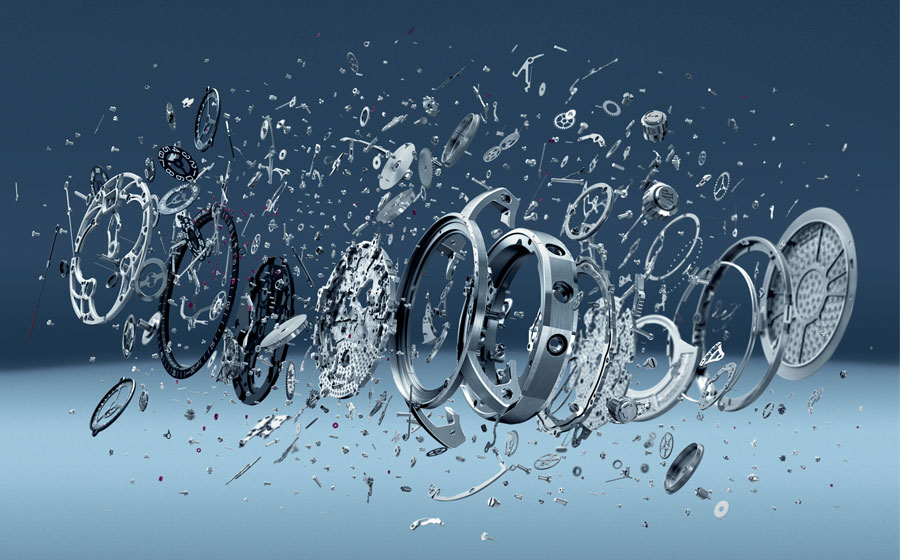
“This new Ultra-Complication is the culmination of several decades of research, design and manufacturing of many different types of complicated mechanisms that have put ergonomics at the forefront of the process. To achieve the highest level of reliability, while also keeping the thickness of our calibres to the minimum, we believe that a ‘mechanical function with an ergonomic focus’ opens a new path for Audemars Piguet and the watch industry as a whole.”
Giulio Papi, Technical Director, Audemars Piguet Le Locle.
Tourbillon volant
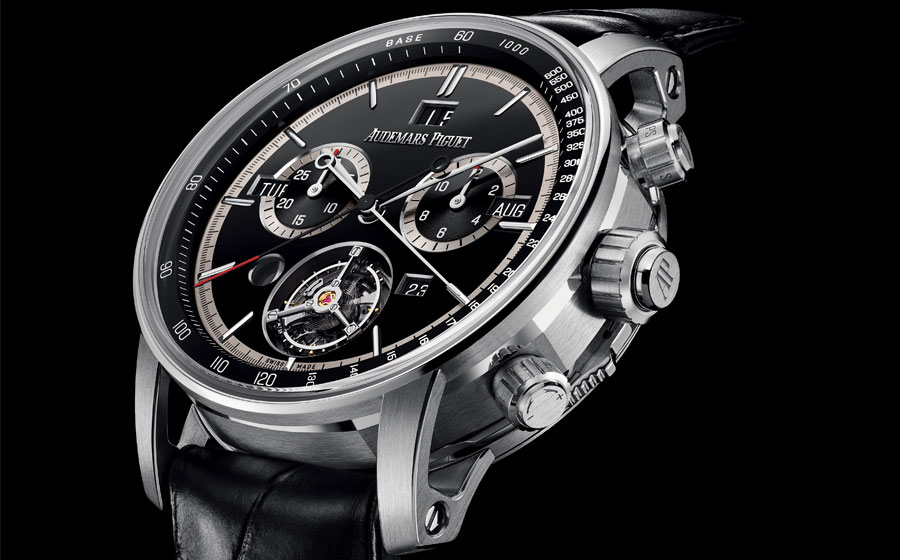
At first glance, nothing distinguishes this flying tourbillon from another one. Though, as your eyes wander closer to the cage at 6 o’clock, the heart of the watch makes yours pounds furiously. And for good reasons, as this new oscillator with increased amplitude needs a lot of energy to prevent the watch from stopping when all functions are working. Thus, to optimize energy distribution, the geometry of the escapement has been rethought to increase the amplitude of the balance. This device comes directly from the Royal Oak Selfwinding Flying Tourbillon Extra-Thin RD#3, which was released last year for the 50th anniversary of the Royal Oak (read the article Royal Oak: “50 years old and still as fashionable as ever”). The 21,600 vibrations/hour frequency tourbillon offers a 60-hour power reserve.
The Research & Development watches of Audemars Piguet (RD#)
RD#1 – Work on sounds, the Supersonnerie
RD#2 – Study on extra-thin
RD#3 – Optimization of energy management
RD#4 – Combination of the last three RD#
Semi-Gregorian perpetual calendar
Calendar indications
Introduced in 2018 with the Royal Oak Selfwinding Perpetual Calendar Ultra-Thin RD#2, the semi-Gregorian perpetual calendar gathers all the calendar indications in the same place.
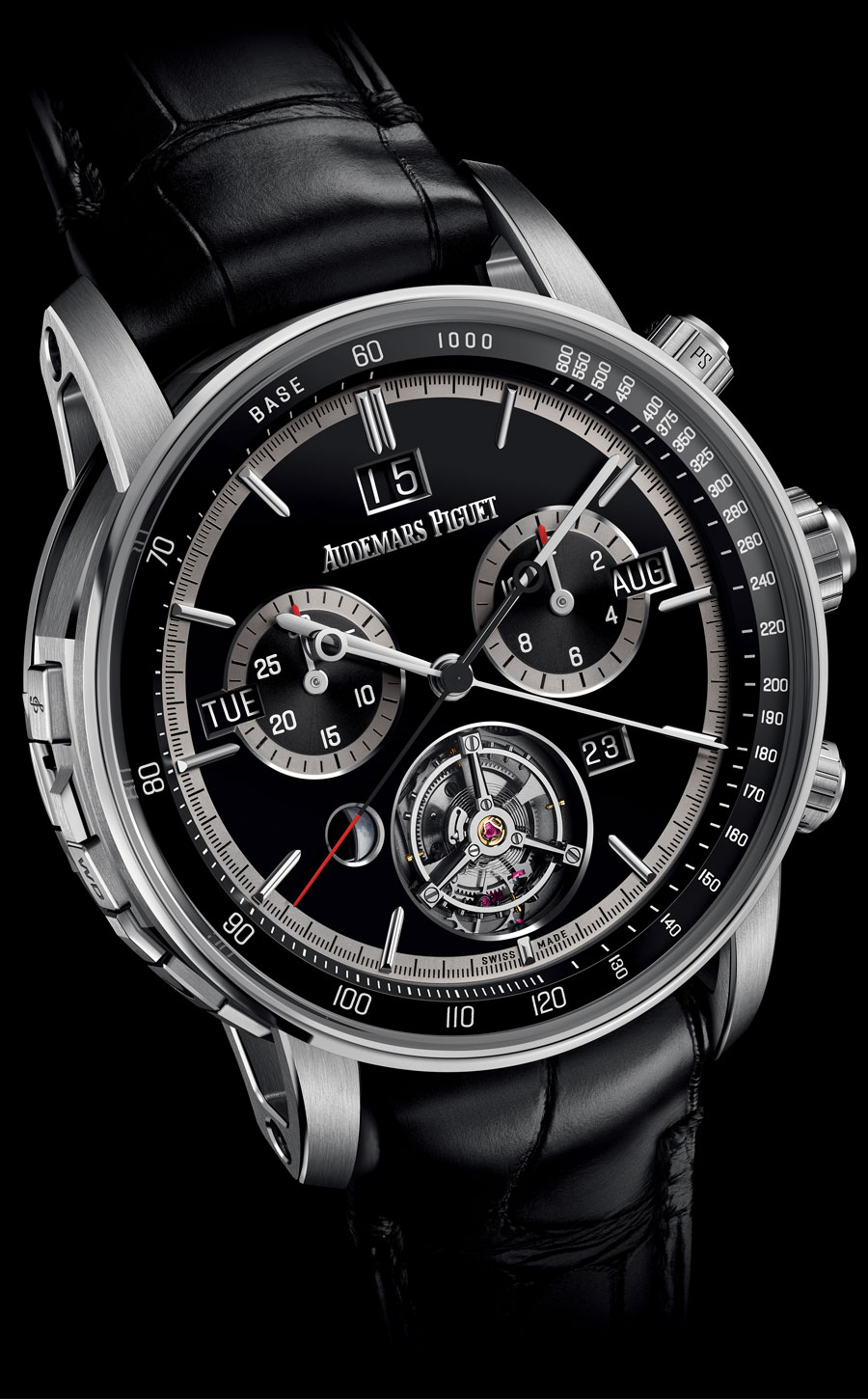
The day of the week, the large date and the month are respectively placed at 9 o’clock, 12 o’clock and 3 o’clock. They share the stage – or the dial – with the lap year the last two digits of the year at 4 o’clock indicating. This is well thought out by the manufacture shop, because to update a perpetual calendar, it is very useful to know in which lap year we are. This is thus a consequential challenge, as you need to find a mechanism able to know about the lap year so that you don’t need to wind the watch. The semi-Gregorian perpetual calendar is able to assimilate how many days are in a month (while including the lap years). Even better, this system considers the 100-year correction normally required in traditional Gregorian perpetual calendars. No manual adjustment is therefore required before the year 2400.
The Large Date was created by A. Lange & Söhne at the end of the 20th century. This recent complication was inspired by the clock of the Dresden theatre clock. Read the article: “The Big date? A great idea!”
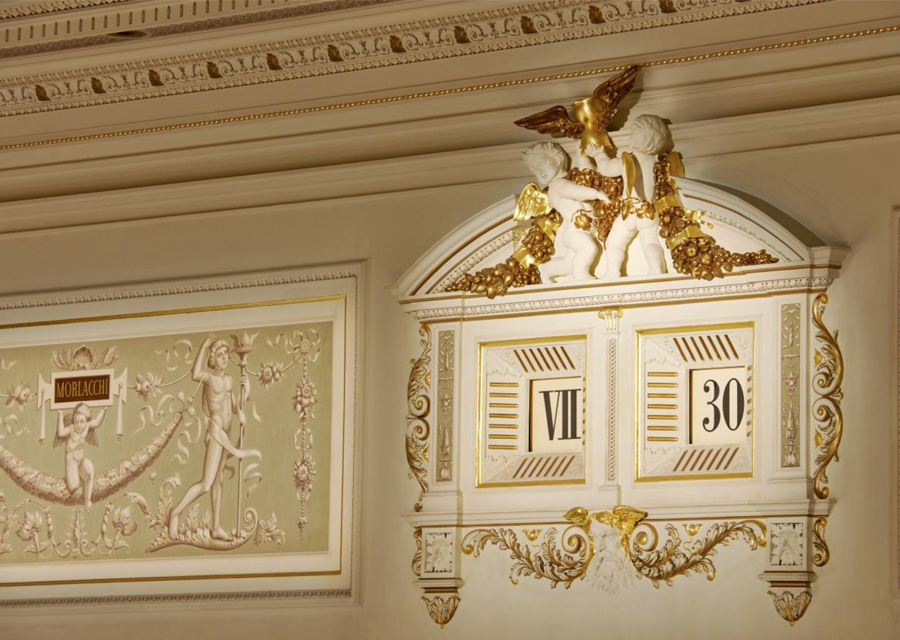
An intuitive winding
For the sake of reducing the user’s stress, winding this watch is simple and intuitive. An anti-breakage device is set up to adjust the date both ways. In this way you can move the date forward or backwards when rotating the crown at 3 o’clock. You can also adjust the month with the “supercrown” at 4 o’clock.
Getting the moon
The Code 11.59 by Audemars Piguet Ultra-Complication Universelle RD#4 would not be a true perpetual calendar without an indication of moon phases. Perfectly symmetrical with an aperture indicating the year at 4 o’clock, the moon phase – at 8 o’clock – is powered by an instant-jump astronomical moon system that conveys an especially realistic depiction of the moon. The waxing and waning stages of the moon are resituated thanks to two concentric discs, on which six different moon positions are printed for a faithful representation of the celestial body. We almost regret how small it is as we would like to better admire all the nuances of the print, but it might have been a less harmonious final design.
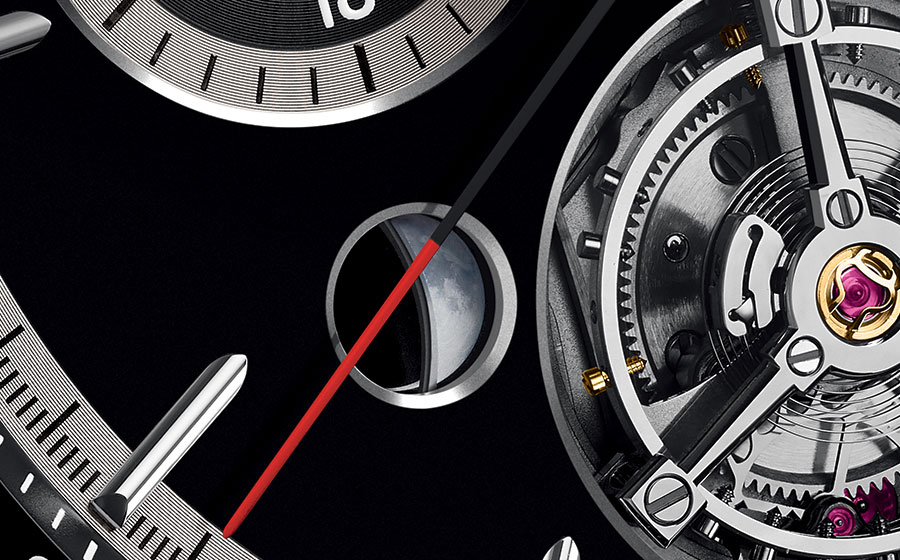
A split-seconds flyback chronograph
Very useful for pilots during a flight, the flyback function allows a reset and restart of the chronograph without hitting stop / reset / restart. Nowadays, it is coupled to a split-seconds facility to measure intermediate times.
The split-seconds feature is for example used during horse races, as it allows the measuring of a run around the course while keeping measuring the time of the whole race.
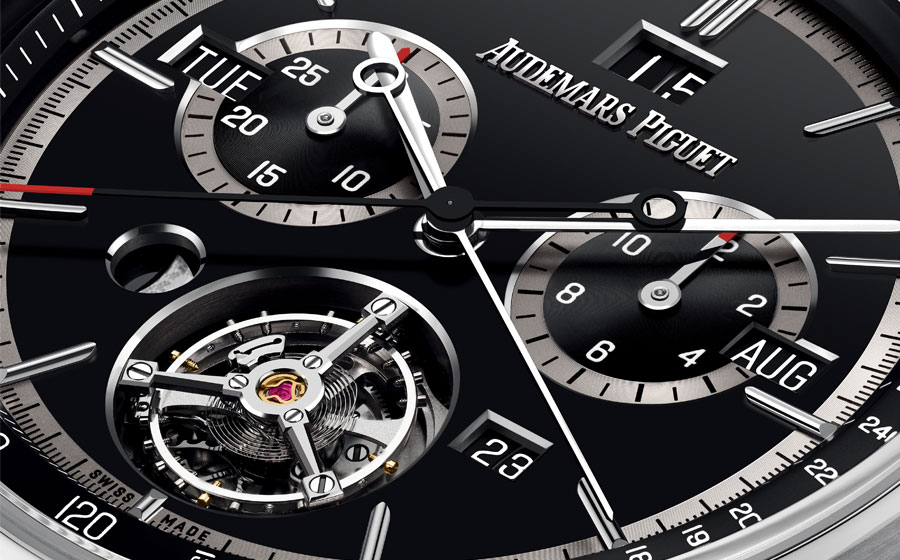
Adding this split-seconds function required hours of thinking. Indeed, you need to know that a complication watch is conceived with functional layers: chronograph, split-second and mass. But one of the first goals of the Audemars Piguet Universelle was to get thinner, it thus had to get “taller”. Hence the enlargement of the automatic calibre and of the ball bearing to create a hole in the centre of the watch to put the split-seconds facility in.
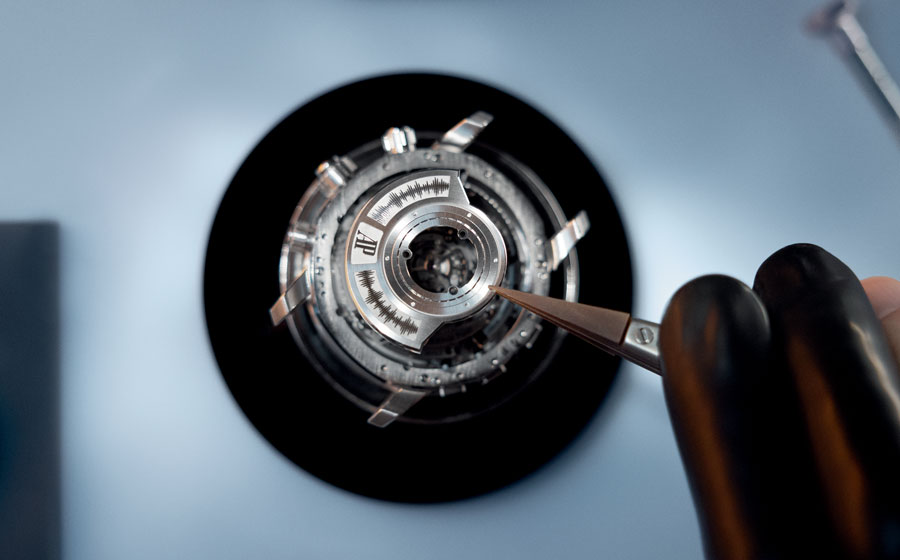
That way, the timepiece has one less layer as the automatic calibre and the split-second become one. A remarkable technical feat considering the energy loss of the perforated mass. That is why the material needed to be heavier than gold, and platinum was chosen – because more efficient. Meanwhile, the visible architecture of the back of the case becomes truly hypnotizing as it delivers its secrets.
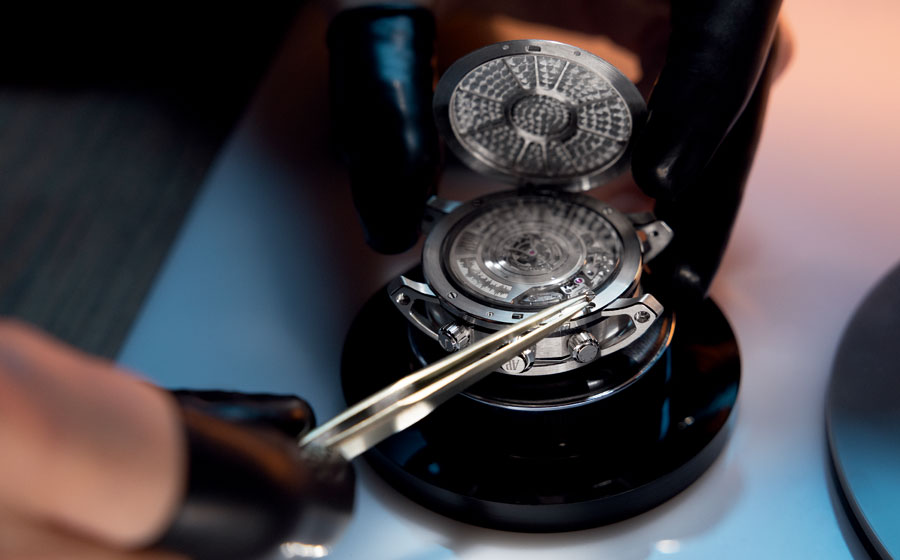
Let the music play
Grande Sonnerie, Petite Sonnerie, minute repeater…
This exceptional edition has all the qualities of a true musician, as it conducts a remarkable musical trio – with the help of a treble clef-engraved pusher on the case band. This trio is made of the traditional Grande Sonnerie which strikes the hours, quarters, and minutes, the Petite Sonnerie which only strikes the hours, and the minute repeater. Just like the usual button activating the synchronized movements of the watch, an additional barrel dedicated to these three complications optimizes energy management and distribution to ensure the proper functioning of the equipment.
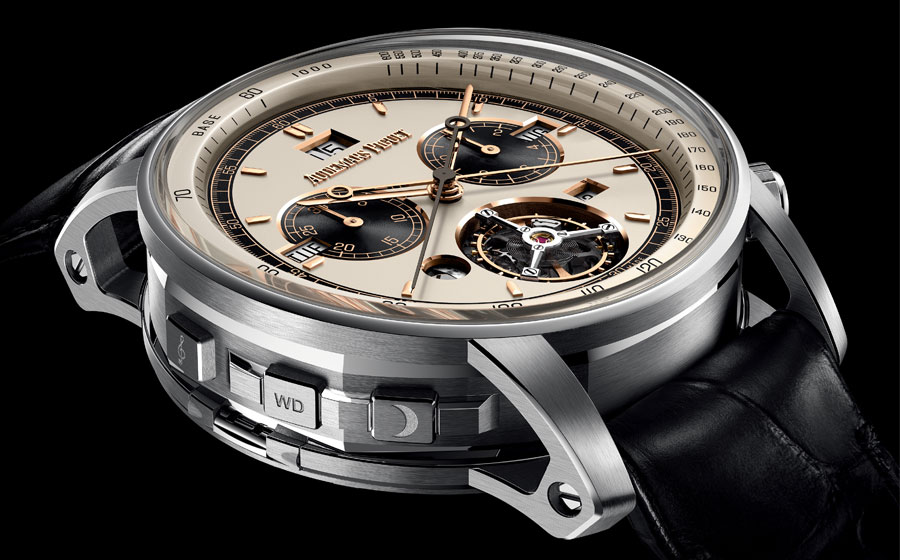
…And Supersonnerie
This instrument is also equipped with the Supersonnerie. Resulting of eight years of research in collaboration with the Swiss Federal Institute of Technology Lausanne, this Audemars Piguet patented technology is used on the 2015 RD#1 model. Watchmakers, engineers, academics, and musicians worked in concert to create a sturdy and water-resistant soundboard for a daily use. Instead of a mainplate – to fixate the gongs – which resonance can change depending on how complicated it is, this watch benefits from a component acting as a soundboard. The Manufacture’s engineers created a double caseback system to reveal the beauty of the mechanism. A “secret” extra-thin cover shares the stage with the soundboard – just 0.6 mm thick –which is entirely crafted in sapphire crystal, on which the gongs are mounted. Louder and more precise, the soundboard delivers a better sound on the wrist as the sound is absorbed and the resonance rings loud and clear.
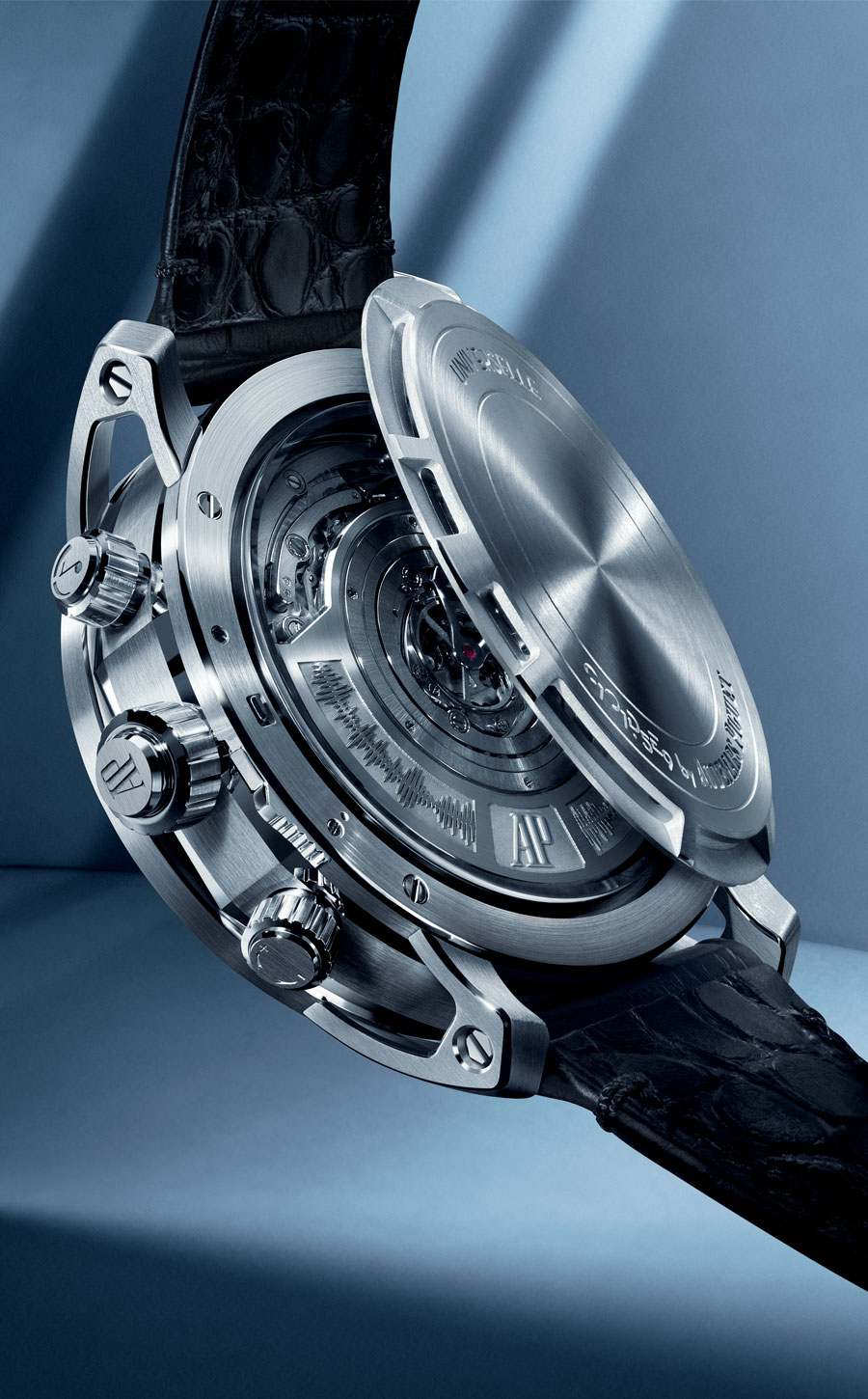
“This watch was the ultimate challenge for our development team. It required an evolution of our internal processes in order to allow four people to work on the calibre at the same time. The level of miniaturisation achieved is a true milestone for Audemars Piguet and paves the way for the next generation of complicated mechanisms.”
Lucas Raggi, Research and Development Director, Audemars Piguet.
Is it that complicated though?
The Code 11.59 by Audemars Piguet Ultra-Complication Universelle RD#4 is indisputably a high watchmaking timepiece. A seriously challenging task perfectly accomplished by the manufacture’s engineers and watchmakers. Perfectly accomplished, of course, but still a difficult challenge! During his video about the AP Universelle, Frank Sans C questioned Research and Development Director of Audemars Piguet Lucas Raggi, who admitted how complicated the achievement of the supercrowns was. So complicated that he patented them both.
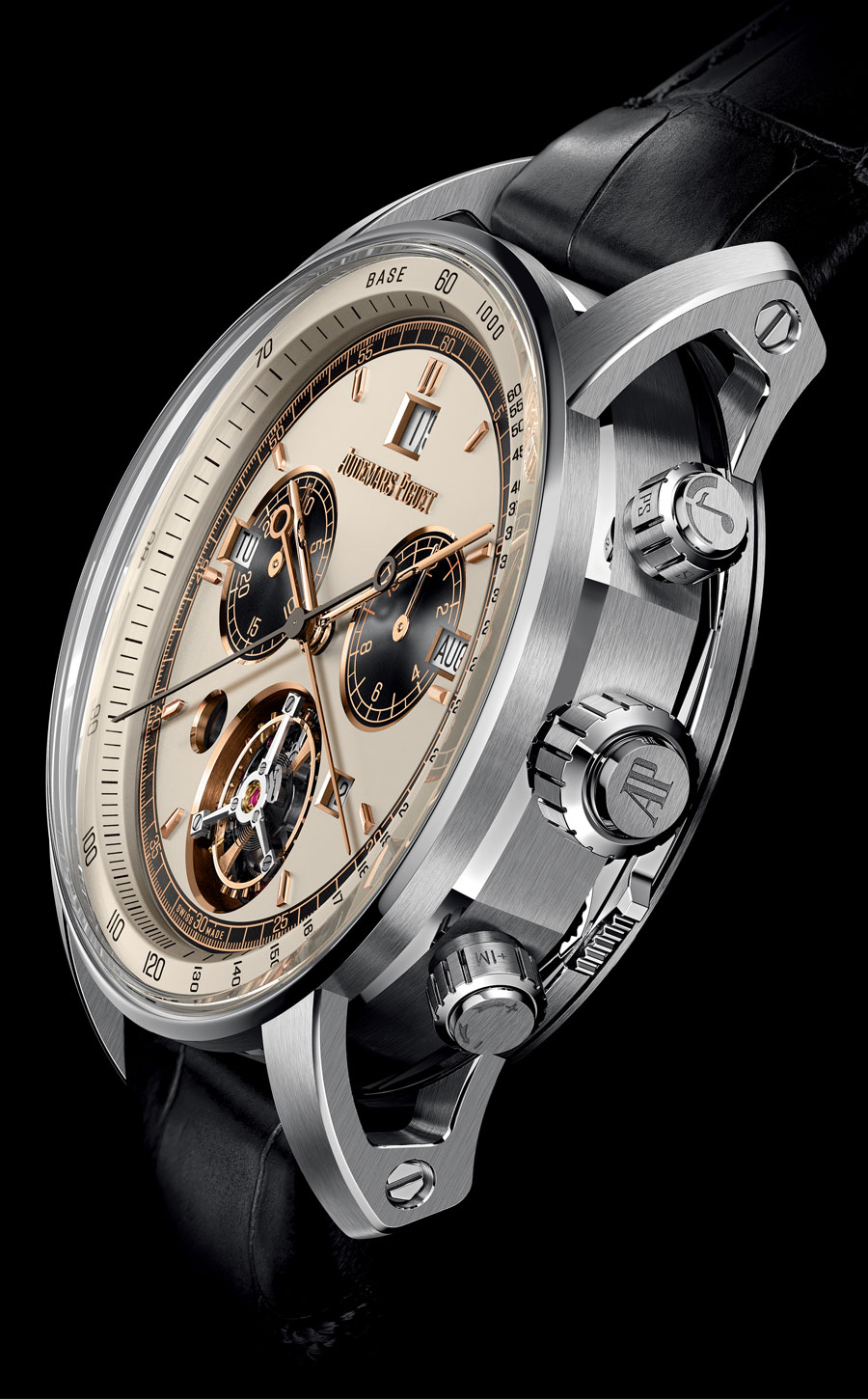
The crown at 2 o’clock is both a start/stop button for the chronograph and a selector for the chiming mode: silence / Petite Sonnerie / Grande Sonnerie. The 4 o’clock crown can reset the chronograph or set the flyback function off. Note that the technical devices or “ergonomics” – lever, tilt, cam – required going back and forth multiple times in the manufacture.
1 watch, 4 possibilities


Four versions are available. One of them is grey and gold with an opaline black gold dial. This one has chronograph counters, the external zone of which echoes the colour of the flying tourbillon. On the other hand, the second version has a beige dial with black counters and contrasting pink gold elements.
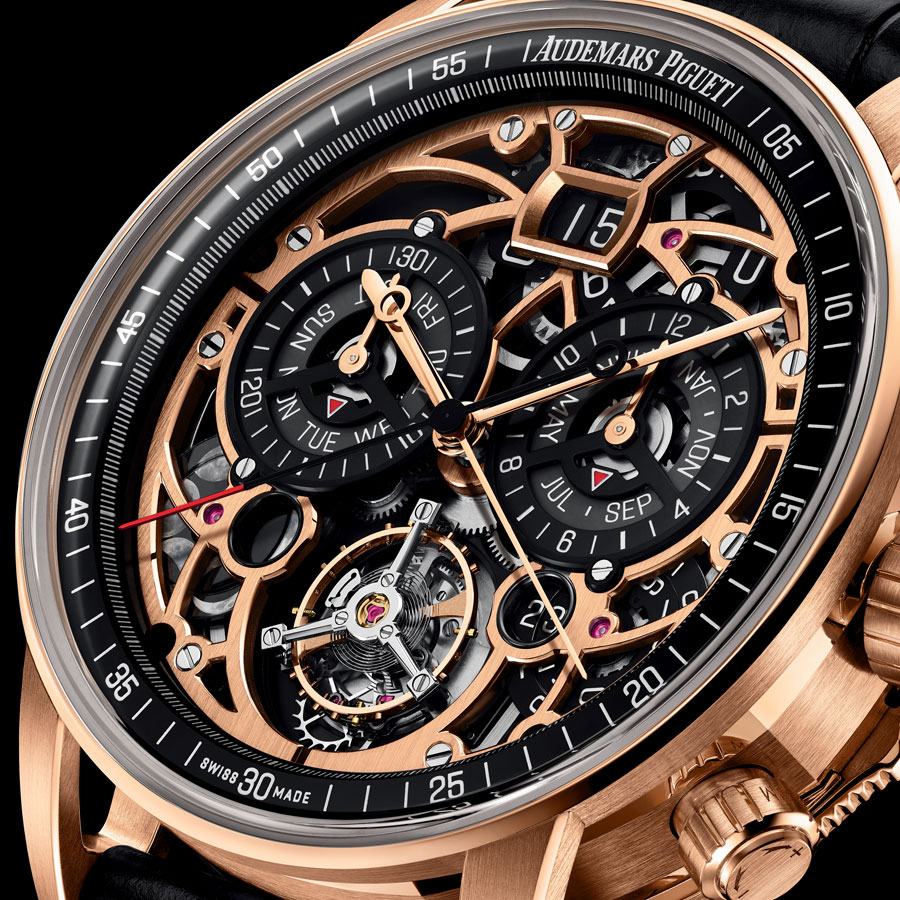
The pink gold and white gold skeleton editions are simply stunning. They let you see every detail of the exceptional mechanical work. A perfectly harmonious quartet!
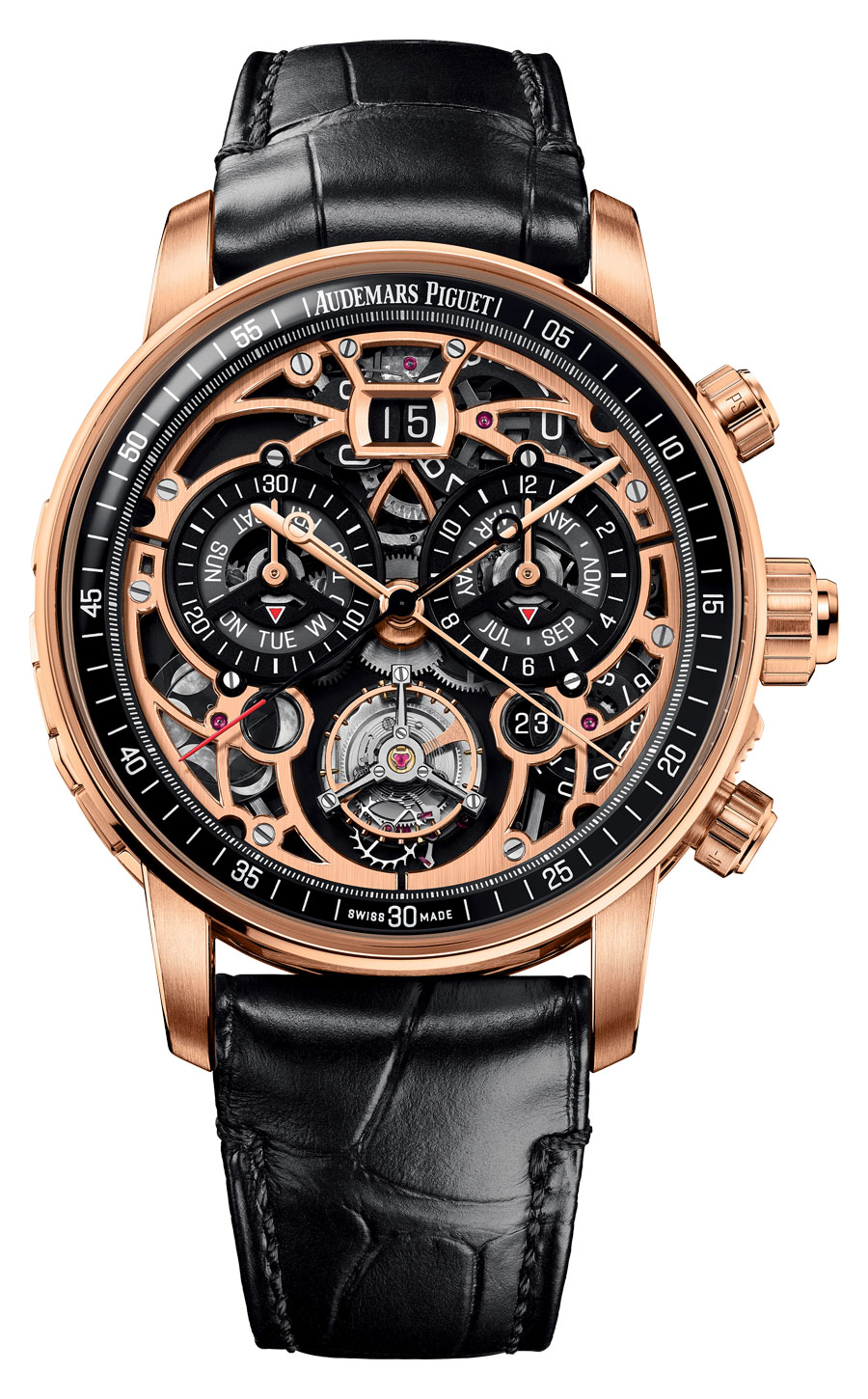
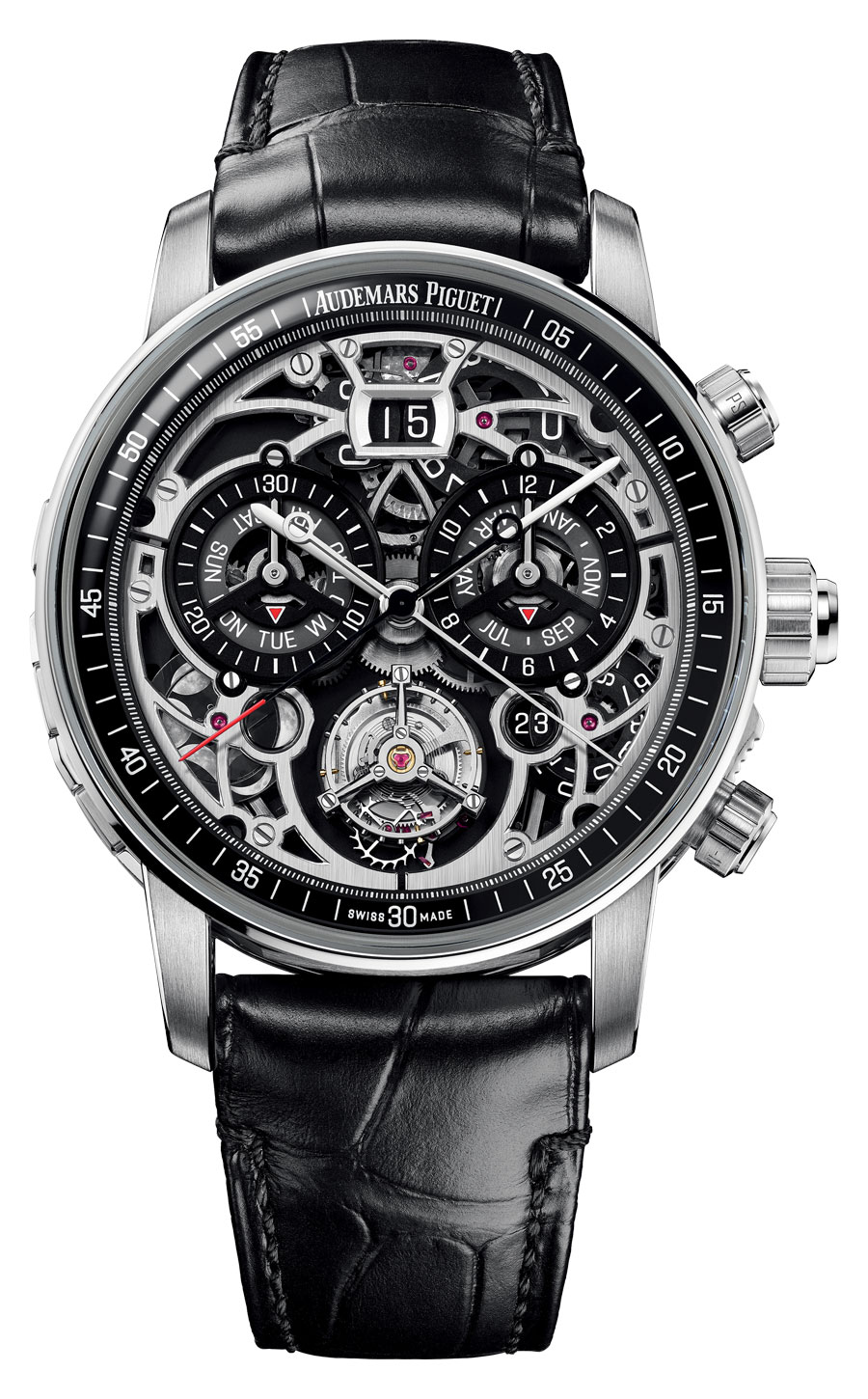
Starting from €1 500 000 (before tax)
Click here to read the Code 11.59 by Audemars Piguet Ultra-Complication Universelle RD#4 collection full technical sheet:
White Gold – Beige Dial / White Gold – Black Dial / White Gold – Skeleton Black Dial / Pink Gold – Skeleton Black Dial
AUDEMARS PIGUET WATCHES WEBSITE
See also:
Read also: